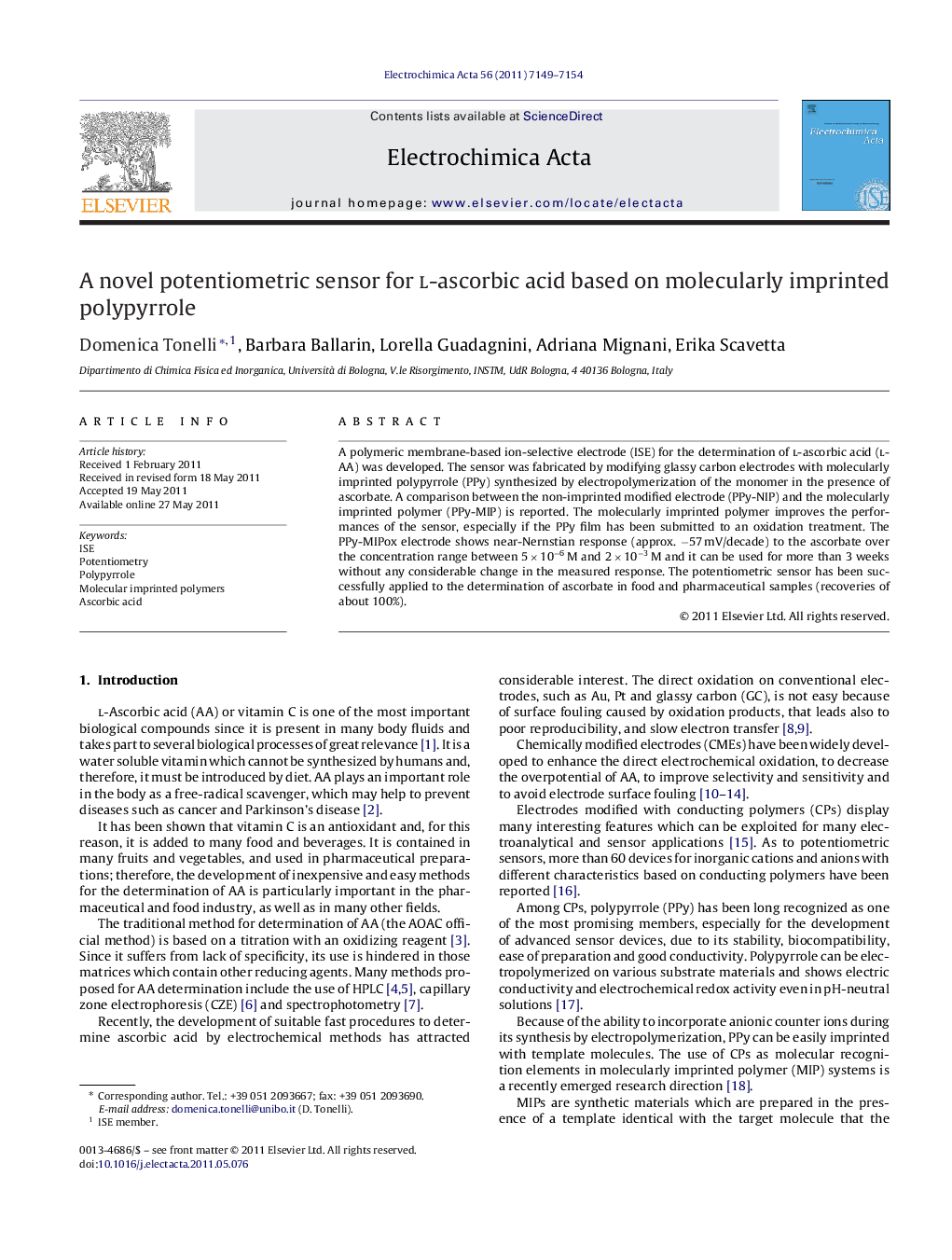| Article ID | Journal | Published Year | Pages | File Type |
|---|---|---|---|---|
| 191046 | Electrochimica Acta | 2011 | 6 Pages |
A polymeric membrane-based ion-selective electrode (ISE) for the determination of l-ascorbic acid (l-AA) was developed. The sensor was fabricated by modifying glassy carbon electrodes with molecularly imprinted polypyrrole (PPy) synthesized by electropolymerization of the monomer in the presence of ascorbate. A comparison between the non-imprinted modified electrode (PPy-NIP) and the molecularly imprinted polymer (PPy-MIP) is reported. The molecularly imprinted polymer improves the performances of the sensor, especially if the PPy film has been submitted to an oxidation treatment. The PPy-MIPox electrode shows near-Nernstian response (approx. −57 mV/decade) to the ascorbate over the concentration range between 5 × 10−6 M and 2 × 10−3 M and it can be used for more than 3 weeks without any considerable change in the measured response. The potentiometric sensor has been successfully applied to the determination of ascorbate in food and pharmaceutical samples (recoveries of about 100%).
► We developed an ion selective electrode for ascorbate. ► The membrane was constituted of molecularly imprinted polypyrrole. ► Imprinted polypyrrole was electrosynthesized in the presence of ascorbate. ► An electrochemical oxidation of the film further improves the sensor performances. ► Ascorbate was determined in real (pharmaceutical and food) samples.
